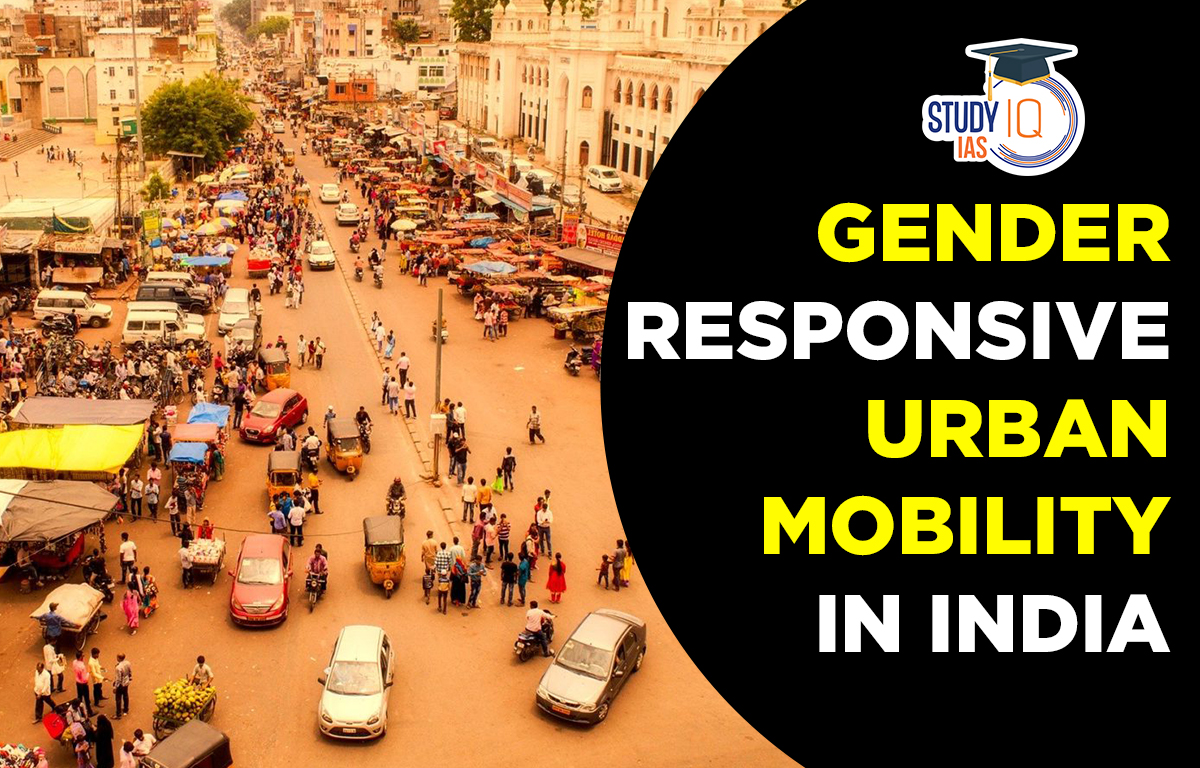Table of Contents
Key Highlights of World Bank’s Toolkit
What are the prevailing issues in urban transport for women in India?
- Safety concerns: Lack of safety and also the lack of a perception of safety are a major impediment for women when it comes to accessing public transport in India.
- Dearth of good street lighting, no reliable last mile transport, and high waiting time at remote bus stops are just some of the challenges in this regard.
- A vicious cycle: Unsafe transport leads to fewer women travelling out which in turn leads to fewer women out in public spaces which actually make these spaces even more unsafe.
- Pink tax: Women often face higher costs of travelling as compared to men, which makes urban mobility a burden for them. This is mainly because of two reasons:
- Trip chaining: Women tend to perform various short commutes to fulfill their multiple responsibilitiesto a greater extent than men.
- Safety perceptions: It is also common for women to choose more expensive routes or forms of transport because they perceive them as safer.
What is Pink Tax?
- The pink tax is not a tax in the literal sense. It refers to how women pay more for the same, or similar, products and services than men.
What is Trip Chaining?
- It refers to a sequence of trips linked together between two destinations, such as home and work.
- For instance, a typical day for a working mother might involve commutes from home to school back to home, then to her place of work, then back to school and back to home.
How the Above Issues of Urban Mobility are Impacting Women?
- Poor life outcomes: Lack of safe, inexpensive and reliable public transport has a profound impact on women’s ability to access education and employment opportunities, in turn leading to poorer life outcomes for them.
- Additional burden: Women from lower socio-economic groups are among the biggest users of public transport in Indian cities. The current issues in urban mobility are putting an additional burden on a section of society which is already disadvantaged.
World Bank
- Establishment: Under the terms of the Bretton Woods Agreement, also known as the United Nations Monetary and Financial Conference1944, the World Bank and International Monetary Fund (IMF) were established simultaneously.
- The World Bank and IMF are also known as the Bretton Wood Twins.The only requirement for a country to join the World Bank is that it must be an IMF member (there are exceptions).
- Headquarters: Washington D.C.
- Objectives:
- Toprovide financing, advice, and research to developing nations to aid their economic advancement.
- To fight poverty by offering developmental assistance to middle- and low-income countries.
- To encourage long-term capital investment to ensure BOP equilibrium and balanced development of global trade.
- The World Bank Group: It consists of five organizations in total, all of which share a commitment to eradicating poverty, increasing shared prosperity, and promoting sustainable development.
- IBRD- The International Bank for Reconstruction and Development
- IDA- The International Development Association
- IFC- The International Finance Corporation
- MIGA- The Multilateral Investment Guarantee Agency
- ICSID- The International Centre for Settlement of Investment Dispute
- Important publications:
- World Development Report
- International Debt Statistics
- Ease of Doing Business Report
- Report Global Economic Prospects
- The Human Capital Index


 SSC CGL Exam 2025 Apply Online Starts Ap...
SSC CGL Exam 2025 Apply Online Starts Ap...
 Daily Quiz 19 April 2025
Daily Quiz 19 April 2025
 Vehicle-to-Grid (V2G) Technology and its...
Vehicle-to-Grid (V2G) Technology and its...





















